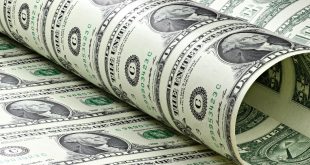The U.S. dollar traded mixed on Thursday, edging higher against the yen but weakening versus the euro, as investors weighed dovish signals from Federal Reserve officials and persistent U.S.-China trade tensions that have heightened uncertainty in global markets.
Dollar Index Slips Amid Fed Rate-Cut Bets
The U.S. Dollar Index (DXY), which tracks the greenback against six major peers, slipped 0.05% to 98.64, marking its third consecutive daily decline and leaving it on track for a 0.3% weekly loss.
The move reflected growing expectations that the Fed will cut rates sooner rather than later, following a series of dovish comments and soft economic indicators.
The Fed’s Beige Book, released Wednesday, pointed to rising layoffs and slowing spending, particularly among middle and lower-income households. Governor Stephen Miran added to the dovish tone, stating that “cutting rates is now more important,” reinforcing market conviction that policy easing could resume before year-end.
Treasury yields mirrored this sentiment, with the 10-year yield hovering just above 4%, near multi-week lows. Analysts, however, cautioned that yields may stabilize in the near term as investors digest the evolving macro picture and the ongoing U.S. government shutdown.
Euro Rises as French Political Risks Ease
The euro extended gains, rising 0.09% to $1.1651, reaching a one-week high. The single currency found support after French Prime Minister Sebastien Lecornu narrowly survived the first of two no-confidence votes in parliament.
By agreeing to delay pension reforms until after 2027, Lecornu defused immediate political tensions, though analysts warned that the move could complicate efforts to control France’s growing fiscal deficit.
Despite political turbulence, euro zone bond markets showed resilience, with investors seeing little risk of contagion or a selloff in French debt absent new elections.
Yen Weakens Slightly as Japanese Politics Take Center Stage
The Japanese yen briefly strengthened to a one-week high of 150.51 per dollar before easing to 151.22, down 0.10% on the day. Political uncertainty in Tokyo has weighed on the yen, though analysts expect medium-term support from upcoming Fed rate cuts, the end of quantitative tightening, and rising global market volatility, which typically benefits safe-haven assets.
In Japan, attention remains on the Liberal Democratic Party’s internal negotiations with the right-leaning Innovation Party, talks that could secure Sanae Takaichi’s path to becoming prime minister in next week’s leadership vote.
Rare Earths Back in Focus as Trade Tensions Deepen
Trade concerns resurfaced after China expanded its export controls on rare earth elements, drawing sharp criticism from U.S. officials who warned of risks to global supply chains.
Despite the friction, U.S. Treasury Secretary Scott Bessent confirmed that President Trump still intends to meet Chinese President Xi Jinping in South Korea later this month, offering a glimmer of diplomatic progress.
Aussie Unmoved Despite Weak Jobs Data
The Australian dollar was steady at $0.6506, showing little reaction to data revealing that unemployment reached a near four-year high in September.
The figures added weight to expectations that the Reserve Bank of Australia may consider further rate cuts, aligning with a global pivot toward monetary easing.
 Noor Trends News, Technical Analysis, Educational Tools and Recommendations
Noor Trends News, Technical Analysis, Educational Tools and Recommendations





